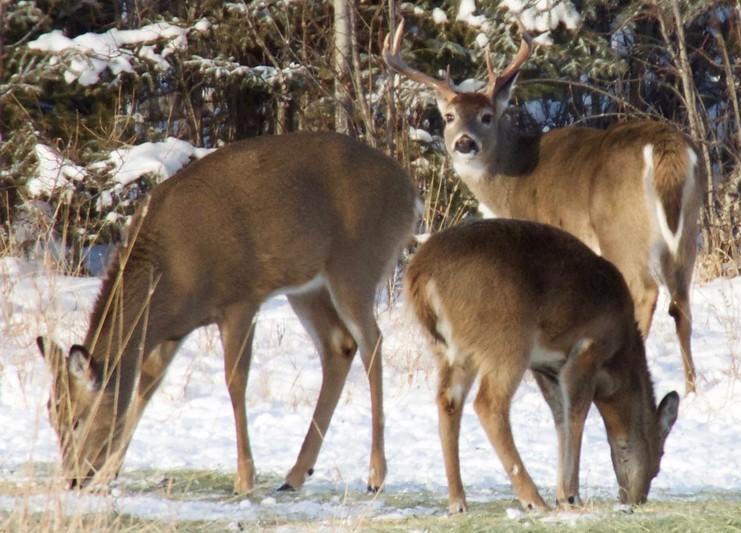Researchers found SARS-CoV-2 in 36% of white-tailed deer in Ohio, with evidence of deer-to-deer spread, according to a study late last week in Nature.
Though a study last month found about the same level of COVID-19 infection in Iowa deer and Canada reported SARS-CoV-2 in deer earlier this month, evidence from the new study "leads toward the idea that we might actually have established a new maintenance host outside humans," said Andrew Bowman DVM, PhD, associate professor of veterinary preventive medicine at The Ohio State University and senior author, in an Ohio State news release.
Infection rate as high as 70%
Ohio State University scientists obtained nasal swab samples from 360 white-tailed deer at nine sites in January through March 2021 in northeastern Ohio and found that 129 (25.8%) tested positive for SARS-CoV-2 via real-time polymerase chain reaction (PCR). The deer had been culled in an effort to control the population.
Each site was sampled up to three times, for a total of 18 sample collection dates.
Deer in six locations were infected with 3 SARS-CoV-2 lineages (B.1.2, B.1.582, B.1.596—none of which are variants of concern). The B.1.2 viruses, dominant in people in the state at the time of testing, infected deer at four sites.
The researchers analyzed the evolutionary relationships of the lineages and found evidence for six human-to-deer transmission events. The authors also note, "Probable deer-to-deer transmission of B.1.2, B.1.582, and B.1.596 viruses was observed," as they noted mutations to the viral spike protein in some deer samples that are not commonly seen in human infections.
The investigators said the prevalence of infection varied from 13.5% to 70% across the nine sites, with the highest prevalence observed in four sites that were surrounded by more densely populated neighborhoods.
Could complicate COVID-19 control
"Based on evidence from other studies, we knew [deer] were being exposed in the wild and that in the lab we could infect them and the virus could transmit from deer to deer. Here, we're saying that in the wild, they are infected," Bowman said in the release.
"And if they can maintain it, we have a new potential source of SARS-CoV-2 coming in to humans. That would mean that beyond tracking what's in people, we'll need to know what's in the deer, too."
Sample collection occurred before the more transmissible Delta and Omicron variants were known to be infecting people, and the Ohio State team did not detect either variant in the deer. The researchers are testing more samples to check for new variants as well as older variants to see if indeed the deer population is serving as a viral reservoir.
"The working theory based on our sequences is that humans are giving it to deer, and apparently we gave it to them several times," Bowman said. "We have evidence of six different viral introductions into those deer populations"
He said of the study, "It could complicate future mitigation and control plans for COVID-19."






















